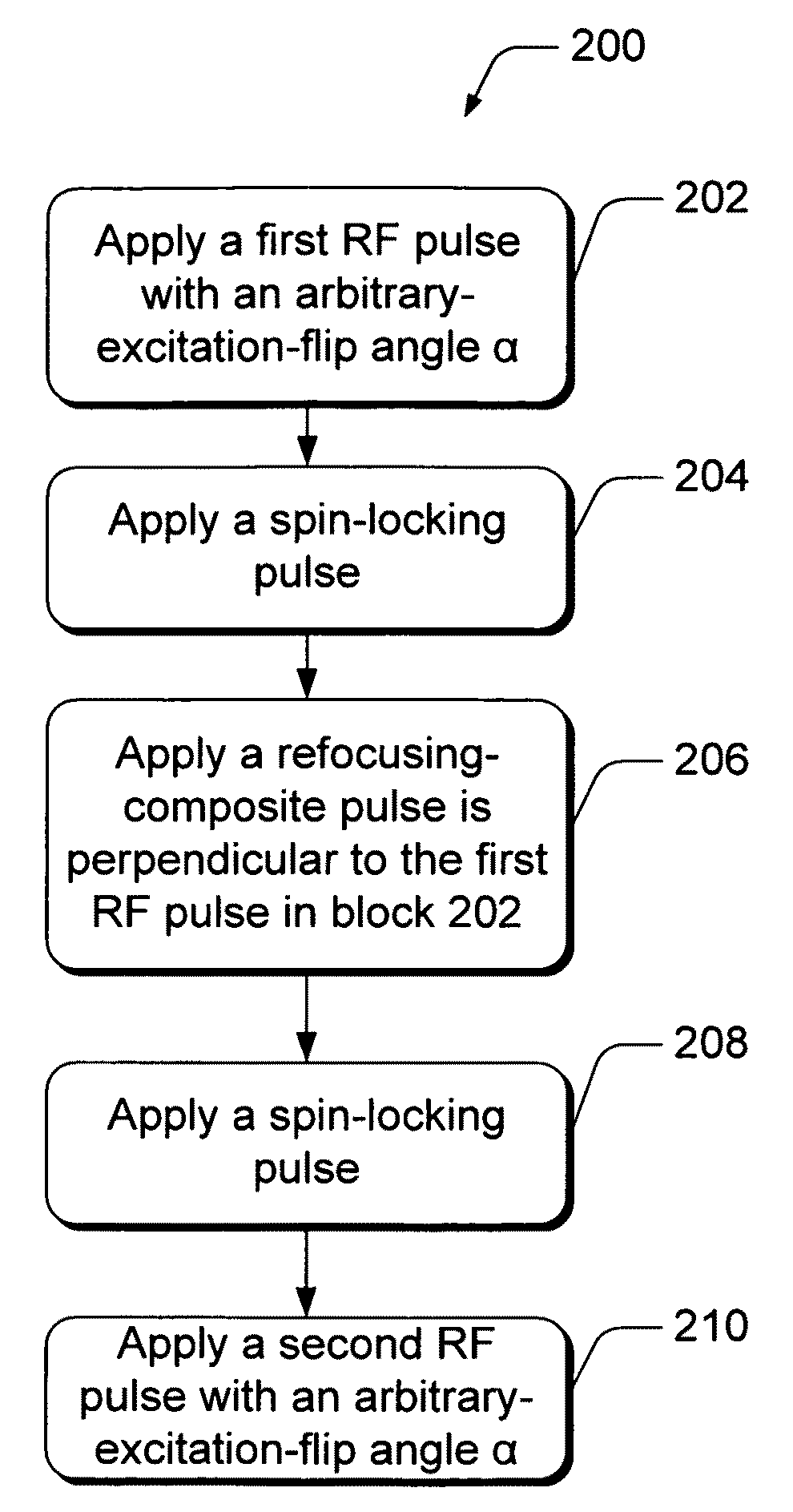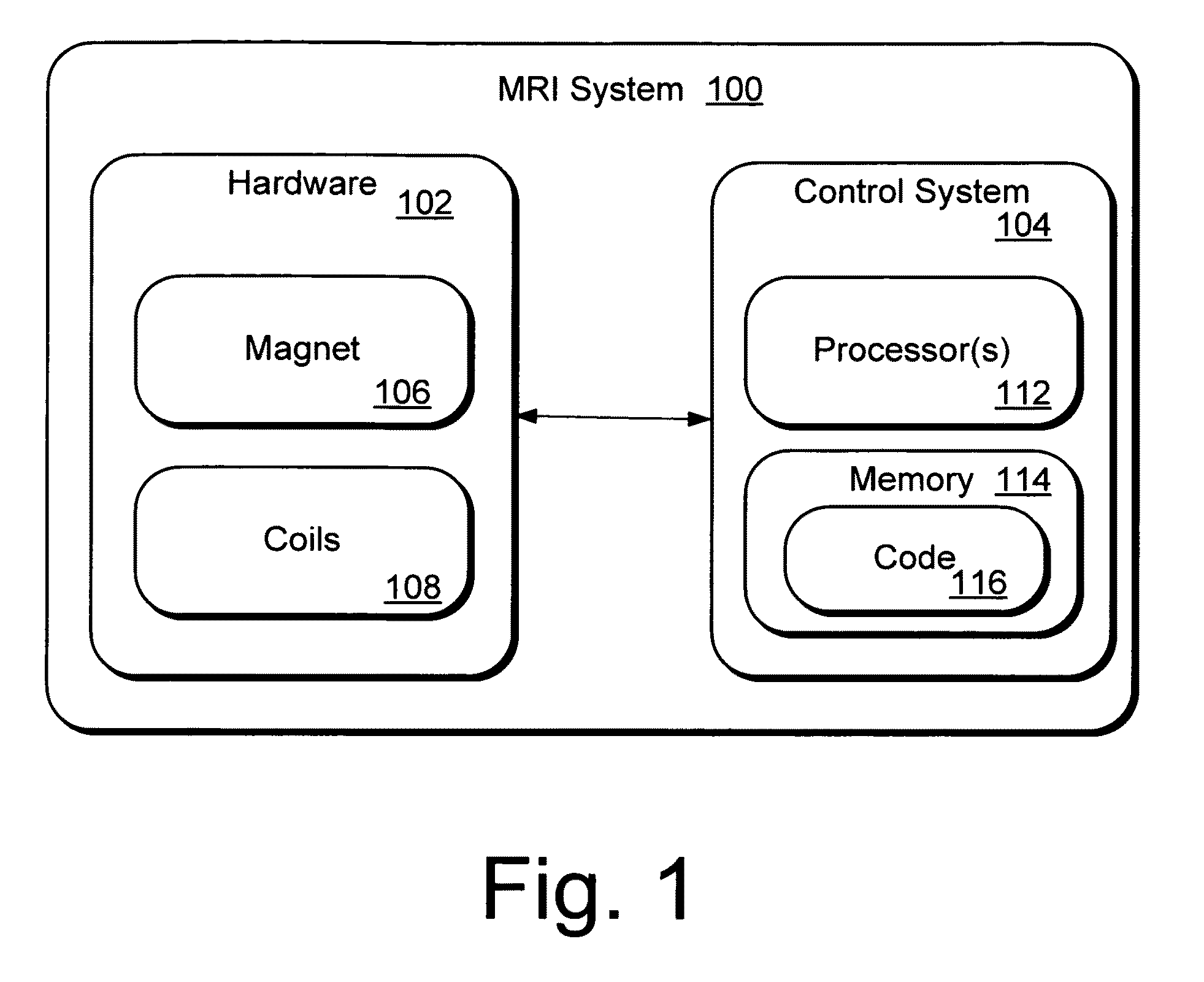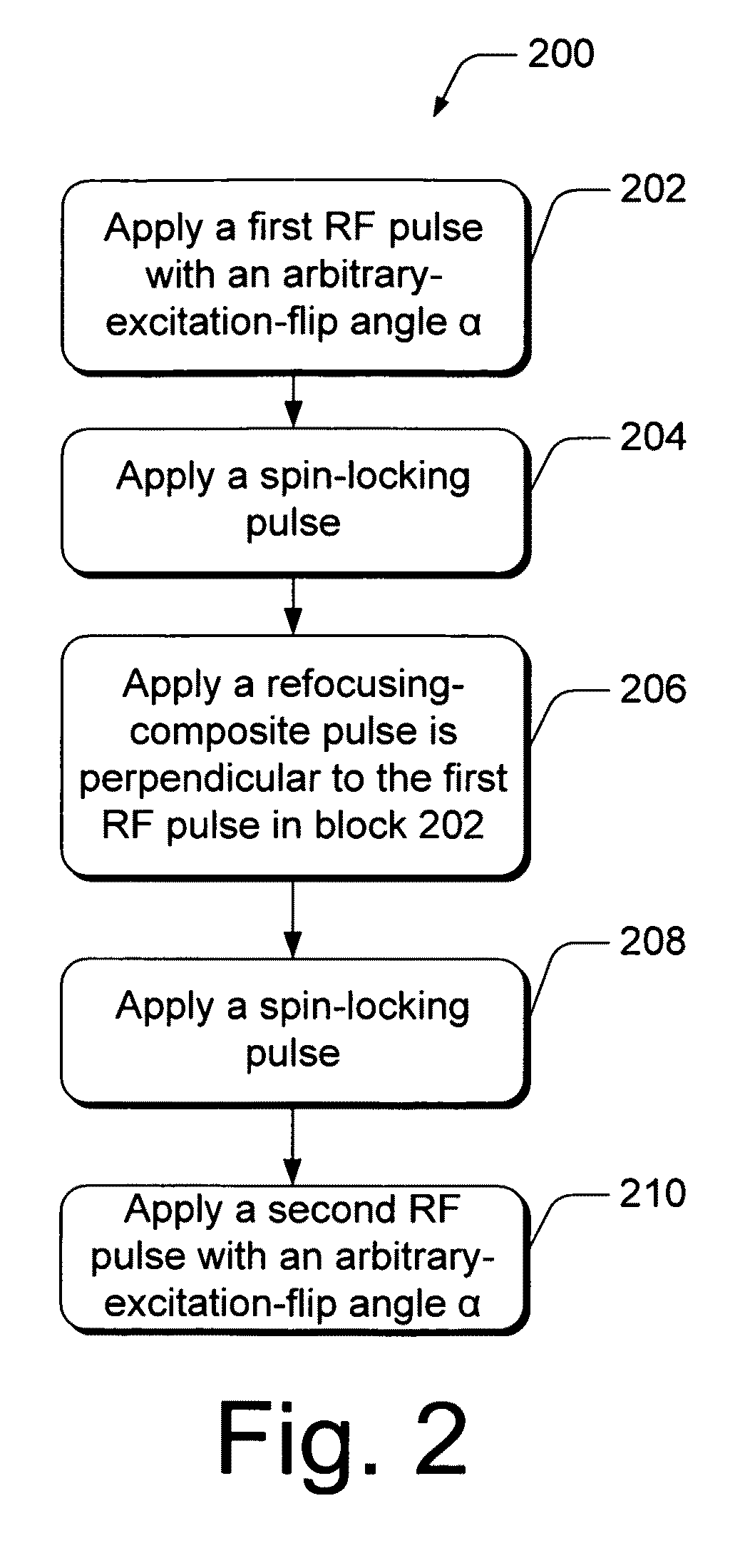System and method for minimizing MRI-imaging artifacts
- Summary
- Abstract
- Description
- Claims
- Application Information
AI Technical Summary
Benefits of technology
Problems solved by technology
Method used
Image
Examples
Embodiment Construction
[0021]Described herein is an innovative MRI system and method able to simultaneously compensate for external-magnetic-field and radiofrequency magnetic-field inhomogeneities in an MRI system.
Definitions:
[0022]In describing the compensation methods, the following terminology will be used in accordance with the definitions set forth below.
[0023]As used herein, “α” refers to a radiofrequency pulse of arbitrary flip angle (_°=degrees).
[0024]As used herein, “apply” means to transmit or to deliver a radiofrequency pulse.
[0025]As used herein, “approximately 180°” refers to an angle sufficiently close to the 180°, but may be slightly less or more than 180°, as would be appreciated by those skilled in the relevant art.
[0026]As used herein, “B0” is an external-magnetic field, which is typically a Direct Current (zero frequency) superconducting field.
[0027]As used herein, “B1” is a radiofrequency-magnetic field delivered to create magnetic-resonance images.
[0028]As used herein, “cause” means t...
PUM
 Login to View More
Login to View More Abstract
Description
Claims
Application Information
 Login to View More
Login to View More - R&D
- Intellectual Property
- Life Sciences
- Materials
- Tech Scout
- Unparalleled Data Quality
- Higher Quality Content
- 60% Fewer Hallucinations
Browse by: Latest US Patents, China's latest patents, Technical Efficacy Thesaurus, Application Domain, Technology Topic, Popular Technical Reports.
© 2025 PatSnap. All rights reserved.Legal|Privacy policy|Modern Slavery Act Transparency Statement|Sitemap|About US| Contact US: help@patsnap.com



